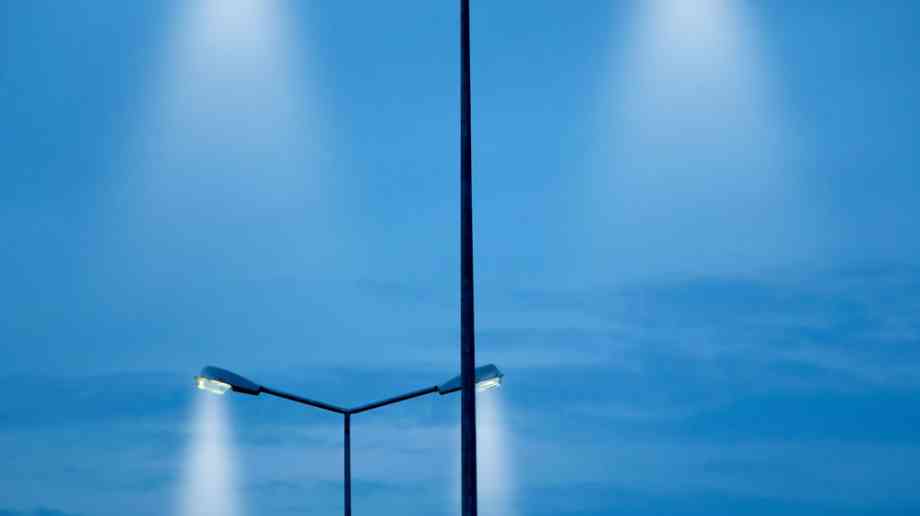Crowdguard will be exhibiting at Stand C50 at the International Security Expo 2025 from 30th September – 1st October, showcasing practical Hostile Vehicle Mitigation (HVM) solutions that protect people and places without disrupting how spaces are used.

Keeping the lights on
Street lights are an essential part of infrastructure providing visibility, safety and a sense of security for those using roads and pavements.
Streetlights are important for a number of reasons – first and foremost safety and crime prevention. Well-lit areas deter certain criminals that benefit from the cover of darkness.
In 2022, the College of Policing reported that: “Overall, improved street lighting has been found to reduce crime. On average, violent and property crime reduced by 21 per cent in areas where street lighting was improved, relative to areas where it was not.”
Street lighting also improves the feeling of safety, meaning people are happier and more likely to be out in the evenings and contribute to the night-time economy.
This also improves quality of life for those living in the area, by extending the hours of outdoor activities, fostering community engagement, and creating a more inviting public space.
Street lighting is important for traffic flow and road safety. It can help drivers to navigate roads, intersections, and pedestrian crossings. It also improves safety for pedestrians on pavements and crossing roads.
There are several things you can do to ensure the continuing function of streetlights, to continue to provide benefits for those in the area.
Where energy and cost savings are important, consider the adoption of LED technology. Most councils have already started to replace all or some of their lights as part of regular maintenance. LED lights consume less energy than traditional bulbs and have a longer lifespan. As well as reducing energy costs, making the switch also reduces maintenance.
Carrying out energy audits can help to identify areas for improvement in energy efficiency. Measures like dimming during off-peak hours, motion sensors, and optimising light intensity can lead to substantial energy savings without compromising safety.
Smart lighting solutions are also an option. These systems enable remote monitoring and control. Sensors and automation technologies can amend lighting levels based on the environmental conditions, traffic patterns, or time of day. This means that lights are only on when they need to be.
Regular maintenance is a necessity – scheduled inspections and repairs mean issues are addressed promptly. This prevents prolonged downtime and reduces overall maintenance costs.
Financial incentives, grants and partnerships should also be investigated. Funds like the Safer Streets Fund are available. Partnerships with private companies can also help offset the initial investment costs, making the transition to more sustainable lighting solutions more economically feasible.
Street lighting is needed for visibility, safety and security. Whilst it is important to save money and energy, there are ways this can be done while ensuring that the lights do stay on.
Event Diary
An essential date in the calendar for those responsible for homeland and global security; International Security Expo returns to Olympia in London on 30 September & 1 October 2025.
Every sport, from grassroots football to world-class tournaments, depends on one constant: high-quality playing surfaces and well-maintained green spaces.
Tickets: Free registration available at www.retailscl.com
The Retail Supply Chain & Logistics Expo is the UK’s leading event for retail supply chain and logistics professionals, showcasing the latest innovations in fulfilment, 3PL, AI-driven automation, and warehouse technology.
Supplier Profiles
Bauder Accepts Keys to its New UK Distribution Centre at Gateway 14
Bauder marked a major milestone in its UK expansion with the official handover of a brand
Words of World: Bridging language barriers with excellence
At Words of World, we specialise in professional translation and interpreting, d
Latest Features
The British Institute of Cleaning Science (BICSc) and the Cleaning & Support Services Association (CSSA) have successfully completed a groundbreaking project aimed at exploring the future of cleaning. This collaboration marks a significant milestone in the cleaning industry, reflecting a shared commitment to embracing innovation with confidence.
The Crown Commercial Service’s (CCS) new framework on Language Services (RM6302), dealing with translation, transcription and interpreting, is live, running from 7th May 2025 to 6th May 2028.










